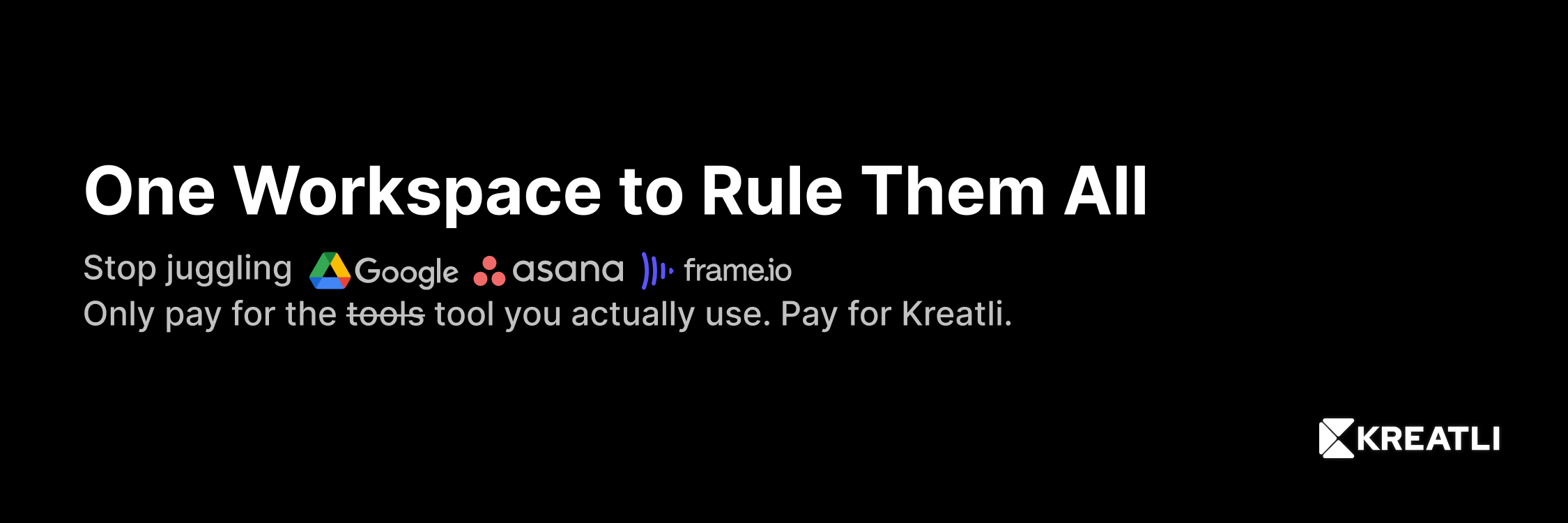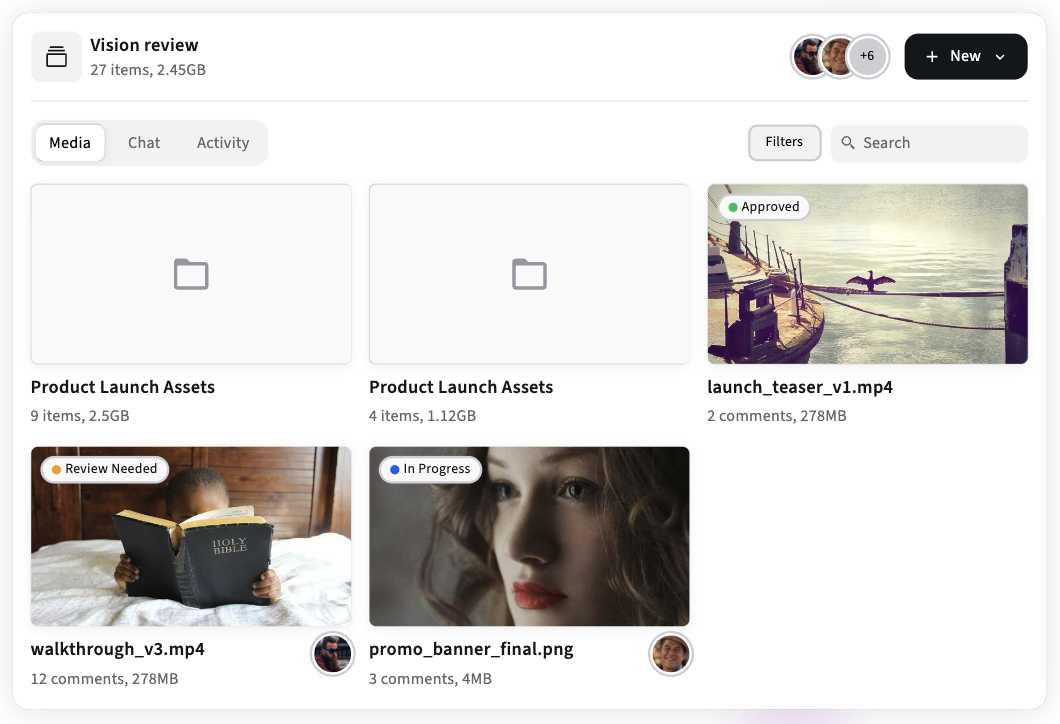Why Creative Teams Need an All-in-One Collaboration Platform
Creative teams waste time switching between Slack, Drive, Vimeo, and email. Learn why an all-in-one collaboration workspace improves speed, clarity, and approvals - plus a simple 4-step checklist to evaluate platforms.

Hidden cost of tool sprawl
If your team uses Slack for chat, Dropbox for files, Google Docs for scripts, email for approvals, and some other app for video feedback, you’re not organized - you’re fragmented. Every context switch costs time and attention, decisions get delayed, and versions multiply until nobody knows which file is final. That daily friction quietly eats deadlines, morale, and margins.
Bringing project files, threaded conversations, and review tools into a single workspace removes the guesswork: everything lives in one place, comments stay tied to the exact media, and approvals aren’t buried across five different apps. Platforms built for creative teams aim to do exactly that by combining projects, chats, and media review in one shared workspace.
Here are the 5 reasons you should consider an all-in-one collaboration platform for your team.

1) Faster turnaround: fewer handoffs, fewer misunderstandings
A typical video review cycle - export, upload, link in Slack, comment, re-export - creates delays at every handoff. Proofing tools and all-in-one workspaces let reviewers leave frame-accurate comments directly on the timeline, so editors don’t have to parse long email threads to find “the 00:07 note.” That removes ambiguity and shortens feedback loops. Modern proofing and review platforms are explicitly designed for this kind of frame-accurate feedback, which is the core reason many teams adopt specialized platforms.
Teams using modern online proofing reduce review cycles by multiple rounds and save dozens of hours per campaign.
2) Less context switching = more creative focus
Each app you switch to steals mental bandwidth. When creative work is interrupted by hunting down files, toggling back to Slack, or trying to remember which version a client approved, momentum dissolves. An integrated workspace groups everything - assets, messages, and version history - around the project so context is preserved. This makes focused creative work easier and reduces rework.
Industry coverage of post-production trends shows cloud and integrated workflows went from “nice to have” to essential as remote work matured; teams that embraced cloud workflows reported better collaboration across locations
3) Clearer approvals and audit trails
For agencies and studios, approvals are not just convenience - they’re proof (and sometimes legal protection). Good creative platforms provide version history, read receipts, and approval logs so you can show who approved what and when. That clarity prevents scope creep, speeds billing, and reduces disputes. Online proofing vendors highlight audit trails and granular permissions as enterprise-grade features teams rely on.
4) One place to onboard clients and freelancers
When clients and external editors are involved, giving them access to the right context without exposing everything is critical. An all-in-one platform lets you invite clients to specific projects or folders, keep conversations tied to assets, and control permissions. That makes client reviews smoother and onboarding external talent frictionless. Product listings and reviews of modern platforms emphasize “project-based guest access” as a big win for agencies and creators.
5) Better scaling - both for projects and teams
As teams grow, the cost of managing disparate apps multiplies: more logins, more admin, more wasted time. A unified platform simplifies seat and storage management, reduces duplicate subscriptions, and clarifies where content lives. That makes scaling predictable - fewer surprises in billing, onboarding, and storage needs.
How to evaluate an “all-in-one” collaboration platform (4-step checklist)
Use this checklist when you test tools. Each item maps to real operational pain points.
Frame-accurate review and markup - Can reviewers pin comments to exact frames/timestamps?
Project-based workspaces - Does the tool organize files, chat, and versions around projects (not just folders or channels)? Project context saves time.
Permissions & client access - Can you invite external reviewers with restricted access and avoid exposing internal roadmaps?
Version history & audit trail - Is there a clear, timestamped approval log for legal and billing clarity?
If a product checks all four boxes, it’s worth piloting on a live brief.
Common objections - and quick responses
“We already use Slack + Drive + Dropbox” - That combo might work as a temporary solution, however once you hit multiple review rounds, it creates version chaos. A single workspace reduces manual coordination and the risk of lost context.
“Are cloud workflows secure and fast enough?” - Yes, cloud post-production matured quickly after remote work became standard. With the right provider and a hybrid strategy (local high-perf storage + cloud for sharing/proxies), teams get both speed and accessibility.
Conclusion - summary & next step
Tool sprawl costs creative teams time, clarity, and money. Moving to an all-in-one collaboration workspace brings faster turnarounds, fewer context switches, clearer approvals, and easier client and freelancer onboarding. Use the 4-step checklist (frame-accurate review, project-based workspaces, permissions, and audit trails) to evaluate platforms, pilot with one project, and measure time saved. If you want to see these benefits for your own projects, start a free Kreatli workspace and test a single brief - you’ll quickly see how centralizing files, chat, and reviews reduces friction and speeds delivery.
Can Kreatli become your All-in-One Collaboration Platform?
